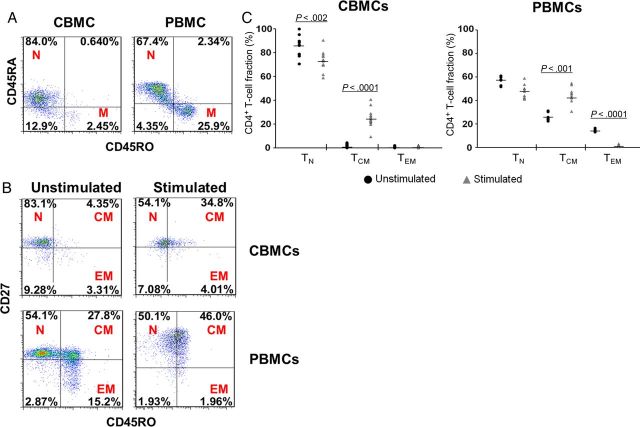Figure 2.
Cord blood mononuclear cells (CBMCs) have a lower fraction of CD45RO+ memory T (TM) cells, compared with peripheral blood mononuclear cells (PBMCs). A, The fractions of naive T (TN) cells (N; CD45RA+CD45RO−) and TM cells (M; CD45RA−CD45RO+) were determined in cord blood samples derived from human immunodeficiency virus type 1 (HIV-1)–uninfected newborns and peripheral blood samples from HIV-1–uninfected healthy adults. Data shown are dot plots of 1 representative donor of 12 cord blood and 8 adult blood donors. B, Representative dot plots show TN cell (N; CD45RO−CD27+), T central memory (TCM) cell (CM; D45RO+CD27+), and T effector memory (TEM) cell (EM; CD45RO+CD27−) subsets among CD3+CD4+ T cells in unstimulated cells or following 4 days of phytohemagglutinin (PHA)/interleukin 2 (IL-2) stimulation of CBMCs and PBMCs. Data shown are dot plots of 1 representative donor of 12 cord blood and 8 adult blood donors. C, TN, TCM, and TEM fractions of CD3+CD4+ CBMCs or PBMCs without mitogen stimulation or following 4 days of in vitro stimulation with PHA/IL-2. Lines represent median values for each condition. Each data point represents the mean of triplicate samples from 12 cord blood and 8 adult blood donors. Statistical analyses were performed to compare stimulated cells (▴) to unstimulated cells (•) in each subset.

